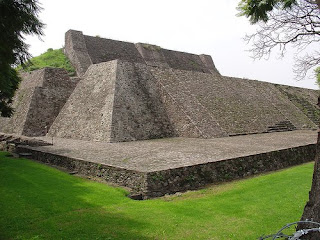 On the left is an oil painting called Black Frame, created in 1934 by Josef Albers, the first art teacher at the college. Josef Albers was keen on experimenting with color, form, and perception. This is the first painting he created at Black Mountain College. In this painting, a black frame is levitating above two rectangular planes of verdant green and sky blue. The background is split into two colors, rust and midnight blue. In this work, Albers pulls apart the foreground, background, frame, and color, which are constituent parts of a picture, and shows how each part is dependent on others.
On the left is an oil painting called Black Frame, created in 1934 by Josef Albers, the first art teacher at the college. Josef Albers was keen on experimenting with color, form, and perception. This is the first painting he created at Black Mountain College. In this painting, a black frame is levitating above two rectangular planes of verdant green and sky blue. The background is split into two colors, rust and midnight blue. In this work, Albers pulls apart the foreground, background, frame, and color, which are constituent parts of a picture, and shows how each part is dependent on others.
This picture on the right is another oil painting created by Josef Albers. The intuition came from his trip to the ancient Temple Tenayuca with his wife, Anni Albers, in 1937. He took numerous photographs of the massive Aztec temple, which was adorned with stone serpents with a spiraling form, which likely inspired the main motif of this painting. The perspective of this painting is more like looking down from the top of the pyramid. Albers used numerous parallel straight lines and different shades to transform a three dimensional structure into two dimensional painting.
Below is a picture of the actual Tenayuca Temple.

Even though Black Mountain College only had a short life of 24 years, the college played a critical role in shaping many major concepts in postwar arts and education.
Proof of attendance:

Hello, I thought that your post was reminiscent of the Mathematics topic we covered in this course which made it really interesting to read. I think that it is great that you specifically covered two paintings because you provided such a concise description of the perspectives that the art provided. I also went to Hammer Museum for one of my events but I focused on another artist. I wish I was able to take a look at the exhibition you looked at because it sounds like the art it featured were a perfect representation of the experimental liberal arts college called Black Mountain College.
ReplyDelete